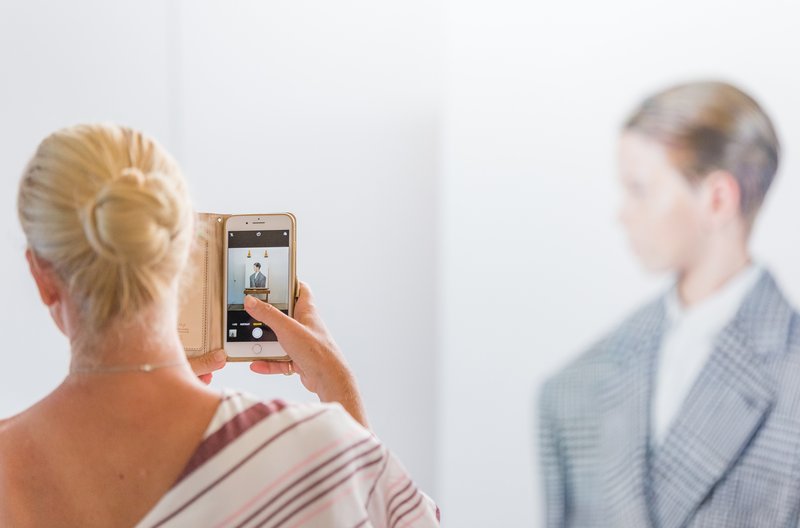Owning the right to your own work
This month we are contributing to a lot of conversations about copyright, intellectual property and our right to our own work.
This month we are contributing to a lot of conversations about copyright, intellectual property and our right to our own work.

Across Australia this month, visual artists are being fêted at the nation's highest-profile events - the Adelaide Biennale, the Biennale of Sydney, Art Month Sydney, the NGV Triennial, with the Perth and the Adelaide Festivals ending only recently - and for each of these events there will be tens of thousands of Tweeted links, Instagrammed images and Facebooked responses.
We've all been in conversations about the rise of the selfie op in the contemporary arts. A bold work at the scale of an entire room or gallery draws its audiences in, enveloping them in an immersive space that generates a strong sense of belonging. On the opening nights of the Adelaide Biennial and the NGV Triennial, I delighted in seeing my social media feed flood with curious and enchanted faces overwhelmed by works that they could inhabit, if only for a moment. When late last year I attended the opening of Craft Victoria's new space, the then chair Lousje Skala took me on a little tour that culminated in the entry galley where the visitor is flanked by mirrored walls and crafted works on bespoke shelving, ready for what Lousje called "our selfie moment."
The ways people engage with the visual image have been changed forever by social media. We take pleasure in sharing what inspires us. We enrich our understanding of a work when we share our critical responses. We expect to be able to find the work of artists we're keen to know.
At the same time, we're all increasingly tech savvy, media literate and rights conscious - and if we're not, we should be.
Social media has exacerbated the widely-held expectation that we should be able to access someone's intellectual property at no cost or without attribution. Increasingly, we are accustomed to reading news, viewing work, and sharing content for free.
I hate that word "content". It's so dismissive of creative and intellectual labour, ultimately undermining the work itself. In a piece I wrote last year for Overland called Content Discontent, I asked "What's at stake for Australian culture when journalism, critique, even art, are treated as mere content, designed to fit into institutional structures?"
And yet that's now become the norm: the users and consumers of social media have become accustomed to free sharing because those social media giants make it oh so very easy for us. And while it might look free at our end, the cost is in the private information we're volunteering in return - information that's making those private companies obscenely wealthy.
So it's very timely, then, that Australian Competition and Consumer Commission has launched an inquiry on digital platforms.
The ACCC would like to hear from us about:
Again that word "content". Missing entirely from the Inquiry's scope are the creators themselves. The issues paper defines "media content creators" as "journalists and media organisations", completely overlooking the creators of images. Artists are silent in this inquiry: the word "artist" doesn't rate a mention in the paper, while the word "content" appears 216 times.
When we resign ourselves to talking about art, critique and journalism as "content", we delimit and devalue creative and intellectual labour as nothing more than what fills the space around advertising. As undifferentiated material that exists only to earn somebody else a profit.
Add to this the threat to the creators of text and image from so-called "fair use" and we quickly see that free is not fair at all.
This month we'll be contributing to a lot of conversations about copyright, intellectual property and our right to our own work. And, of course, we'll be doing a lot of that on social media, mindful of what we're exchanging for the privilege of free access, and mindful as always to attribute artists and sources as we do our best to reach as many people as we can.
NAVA would love to see all of our Members, and as many artists as possible, respond to this inquiry. Please share this email once you've read it - we've only got until Tuesday 3 April.
You can respond to the issues paper and write a submission.
Or if multiple choice and short answer is more your thing, you can fill out this survey.
Some questions that you might like to consider in your response:
Let's inundate the ACCC with the voice of the artist.
PS: We've got until Tuesday 3 April 2018 to respond to the ACCC digital platforms inquiry. It's vital that artists participate. You can write a formal response to the discussion paper, or just do this quick survey.
Photo: Instagramming Michael Zavros Portrait of Leonidas Zavros in Versace, 2018, oil on canvas, 120x90cm, courtesy of the artist and STARKWHITE, Auckland. Photo by Thomas Oliver 2018, courtesy of NAVA.